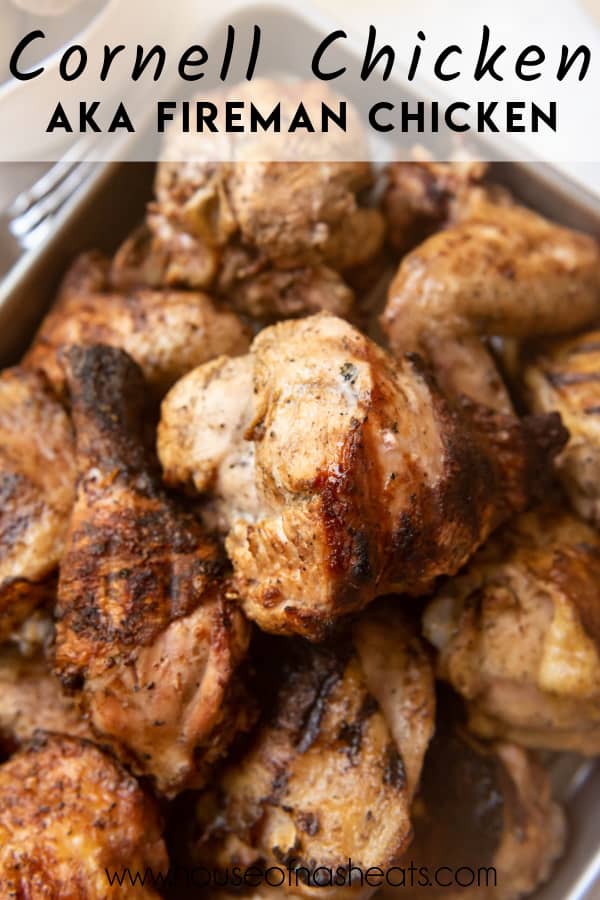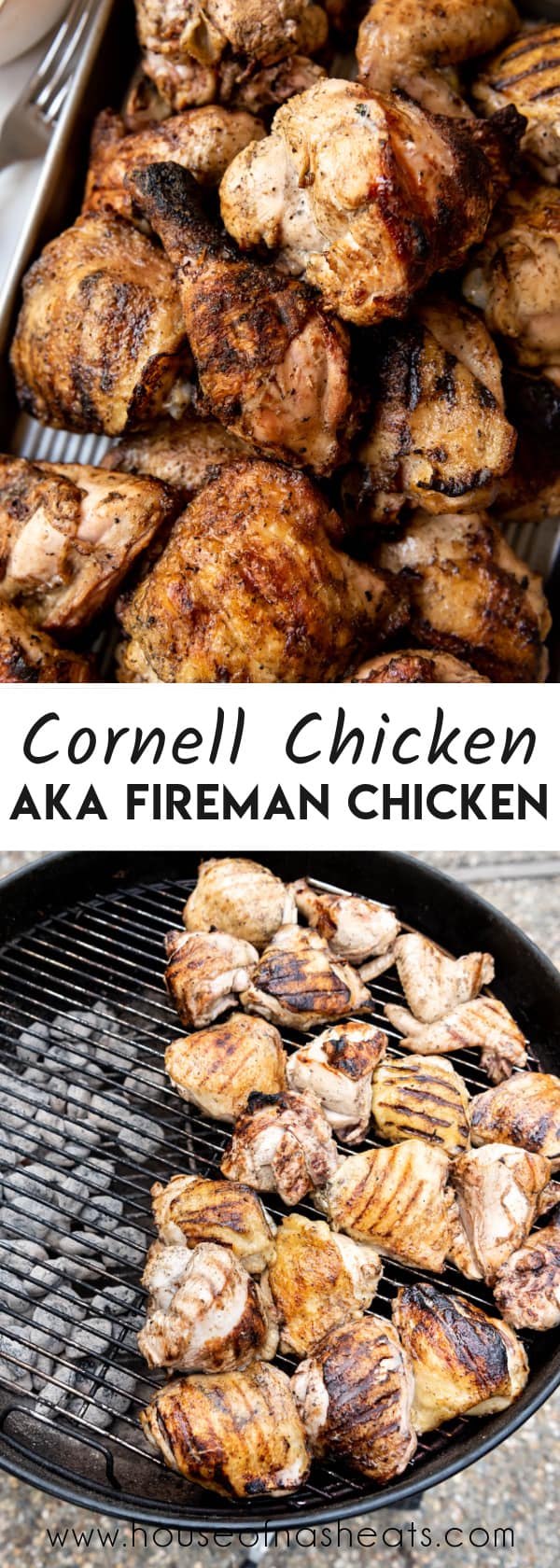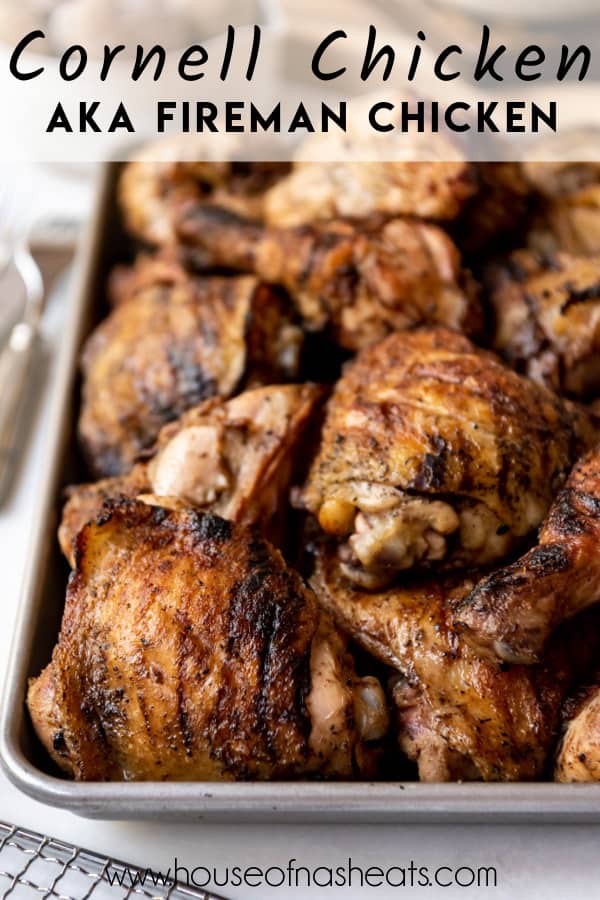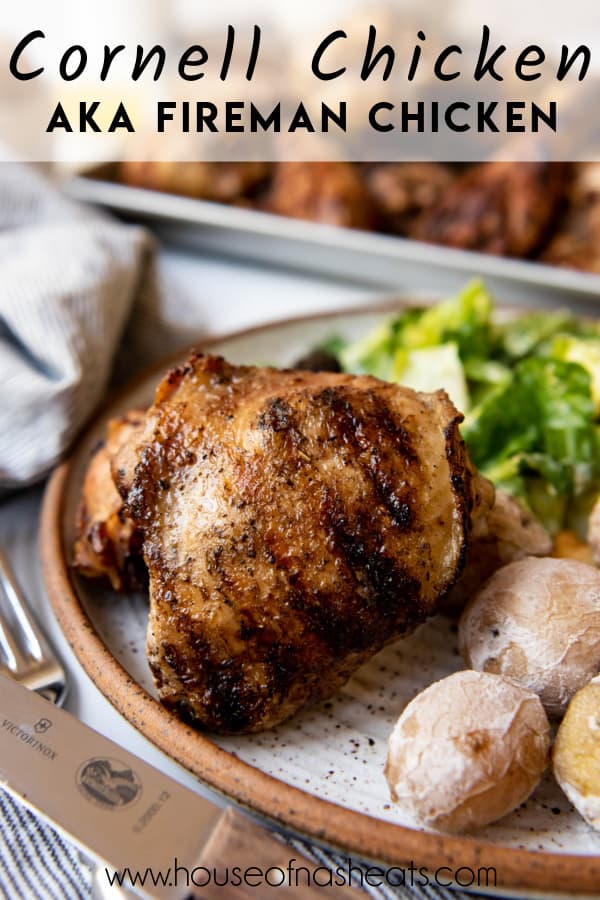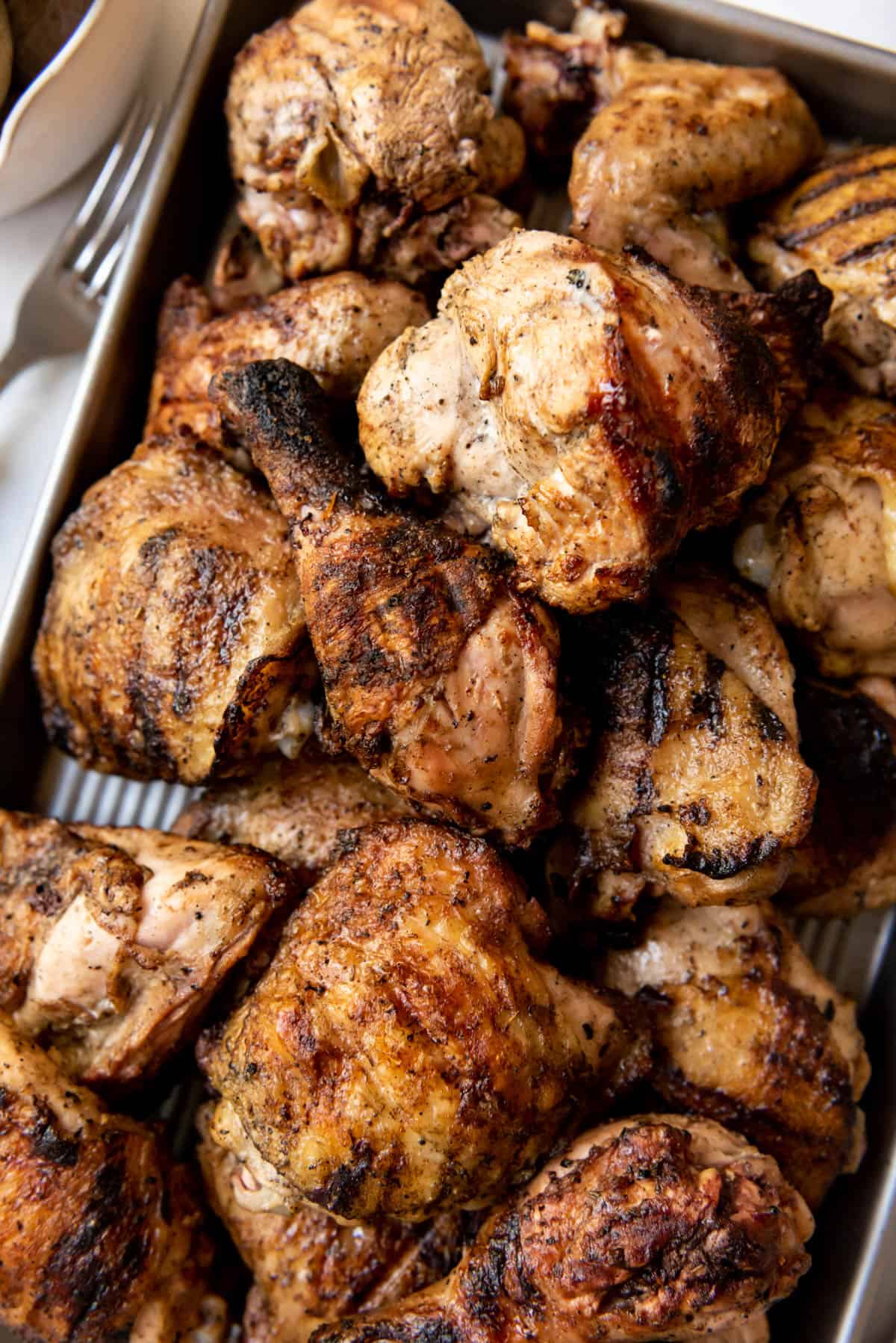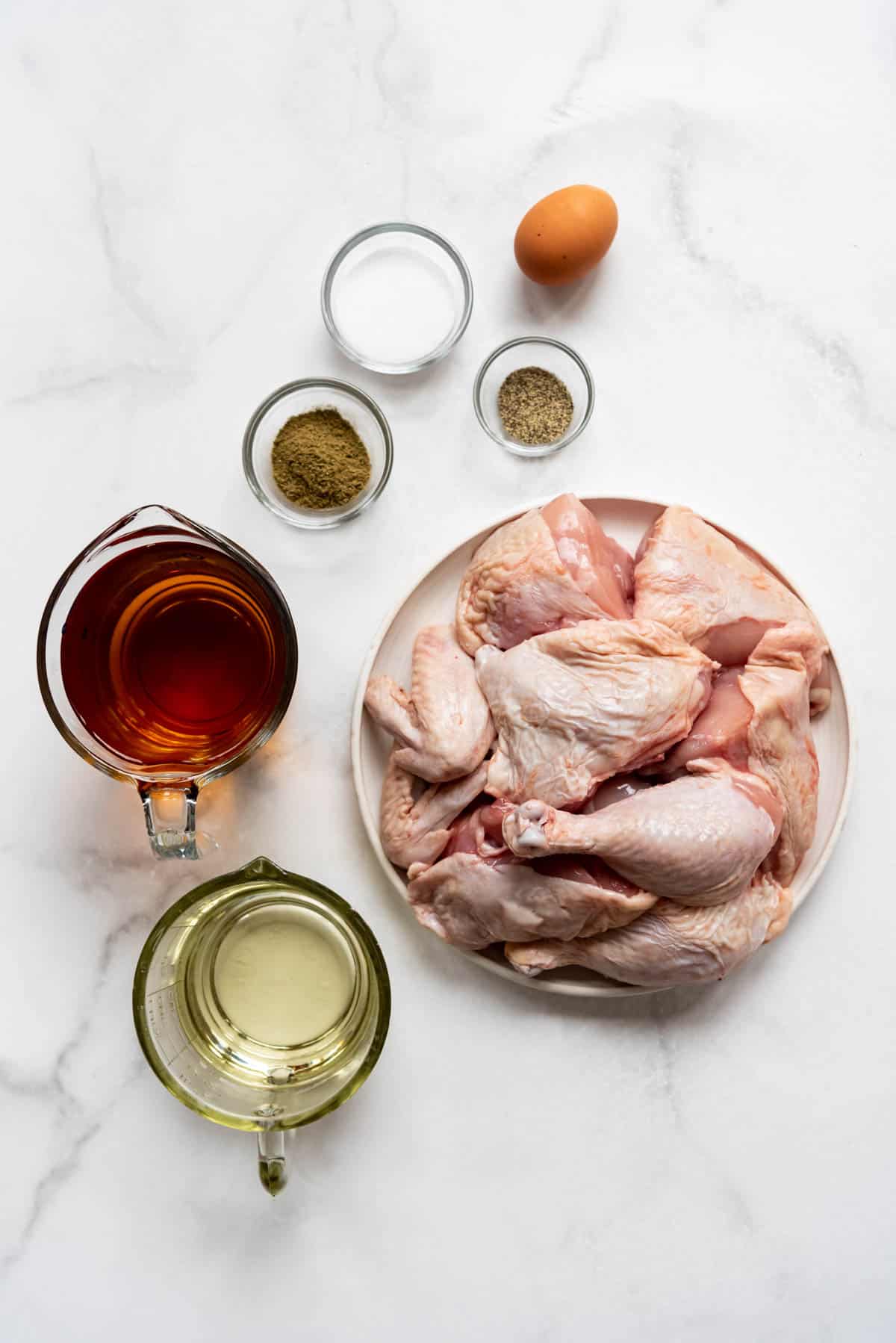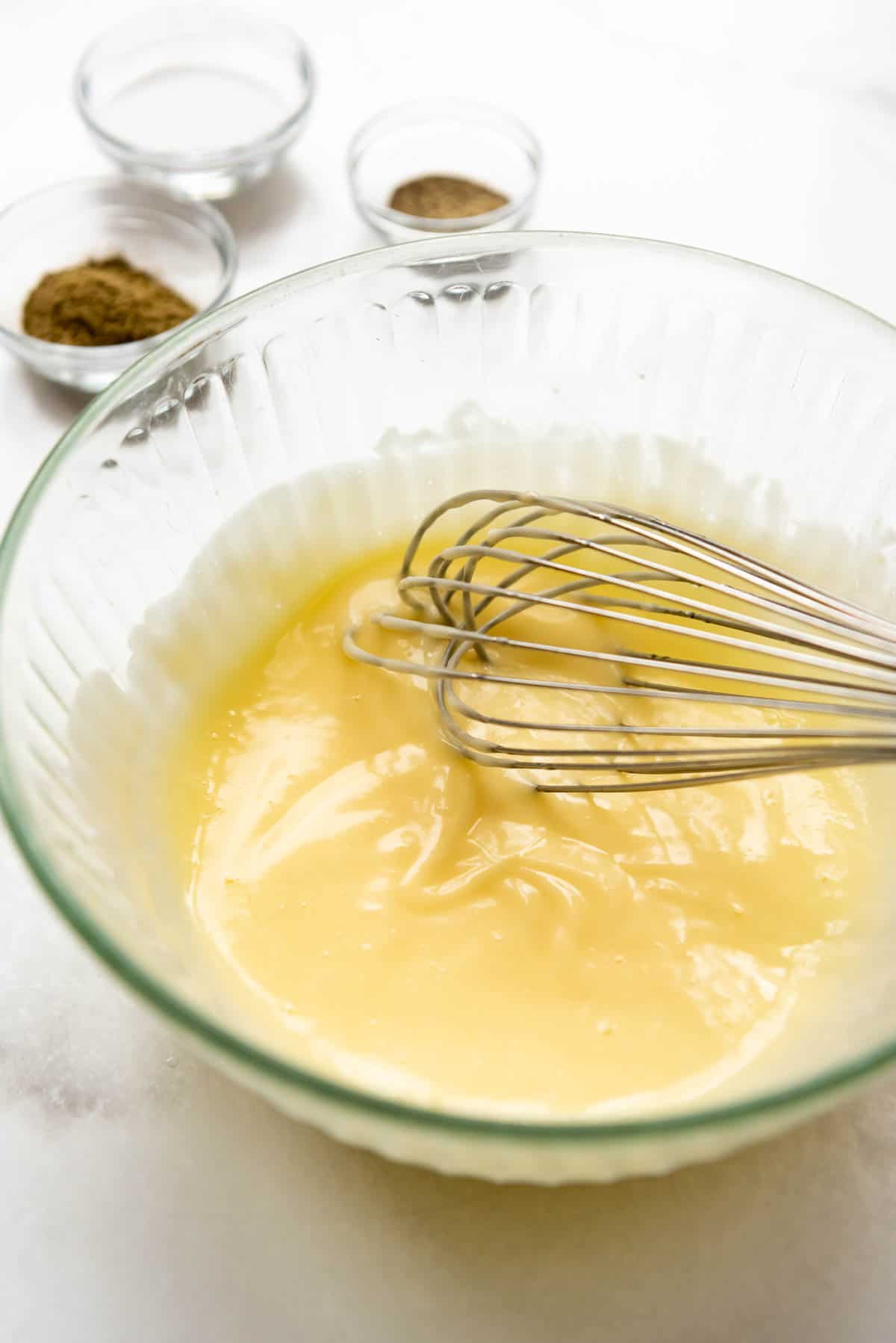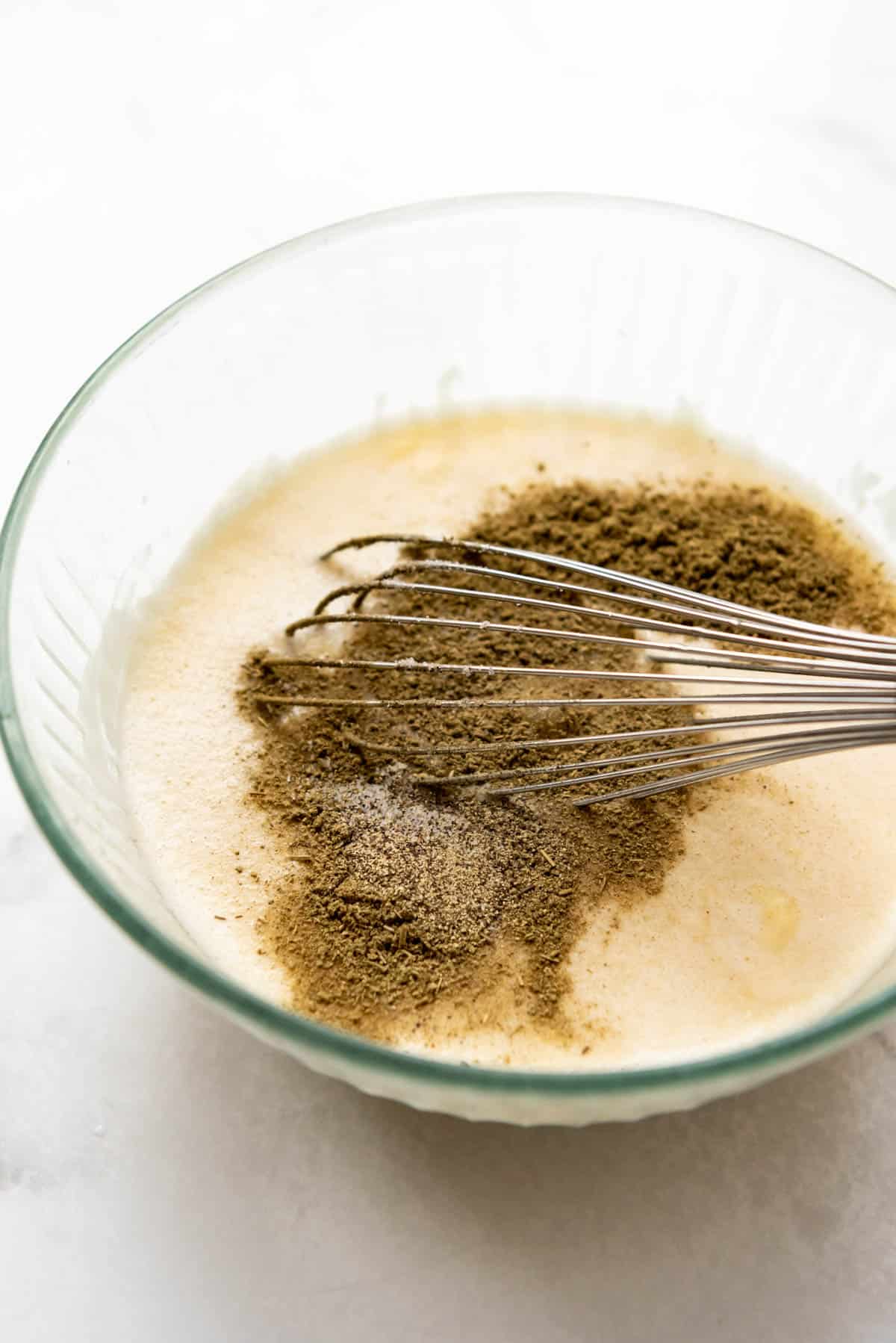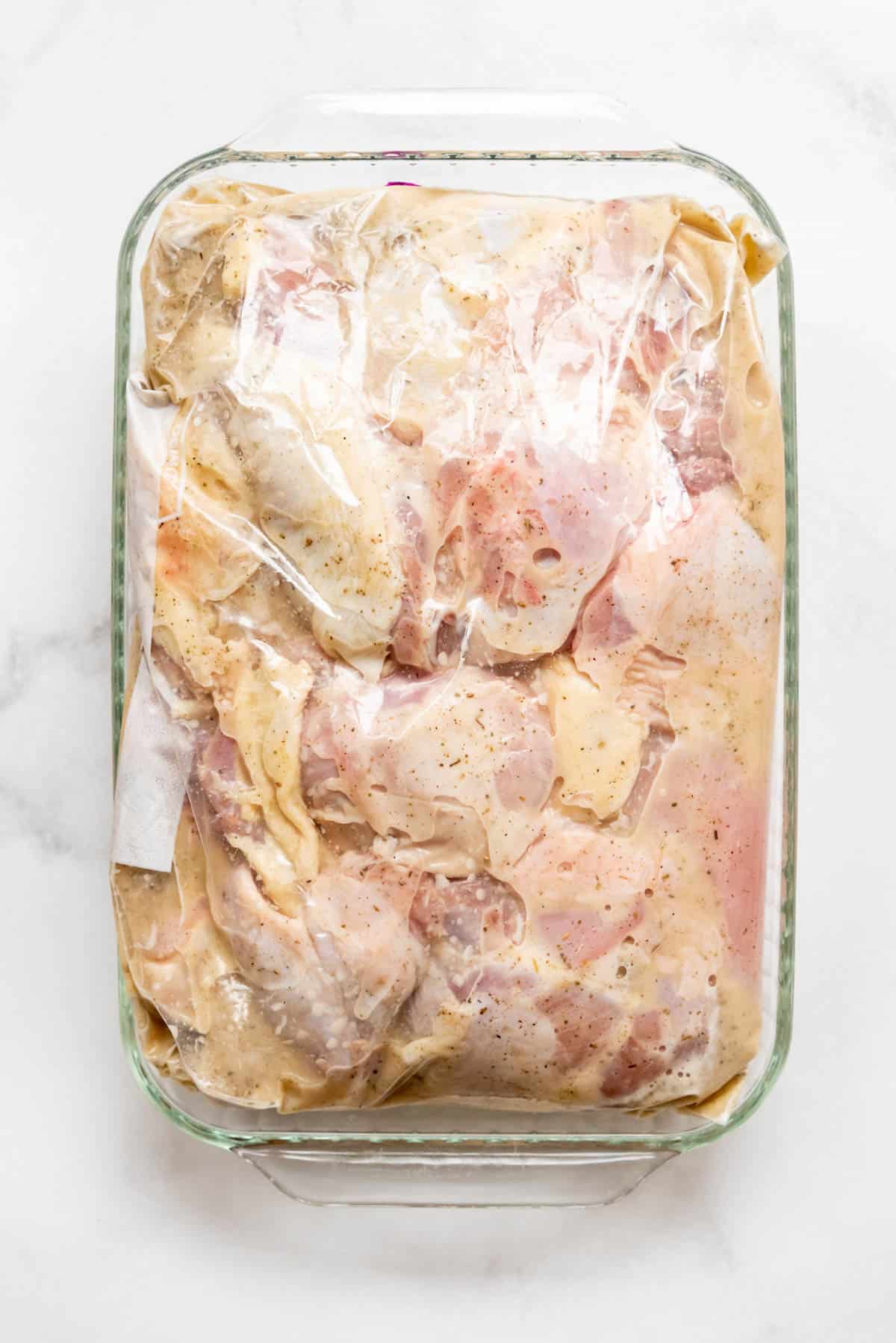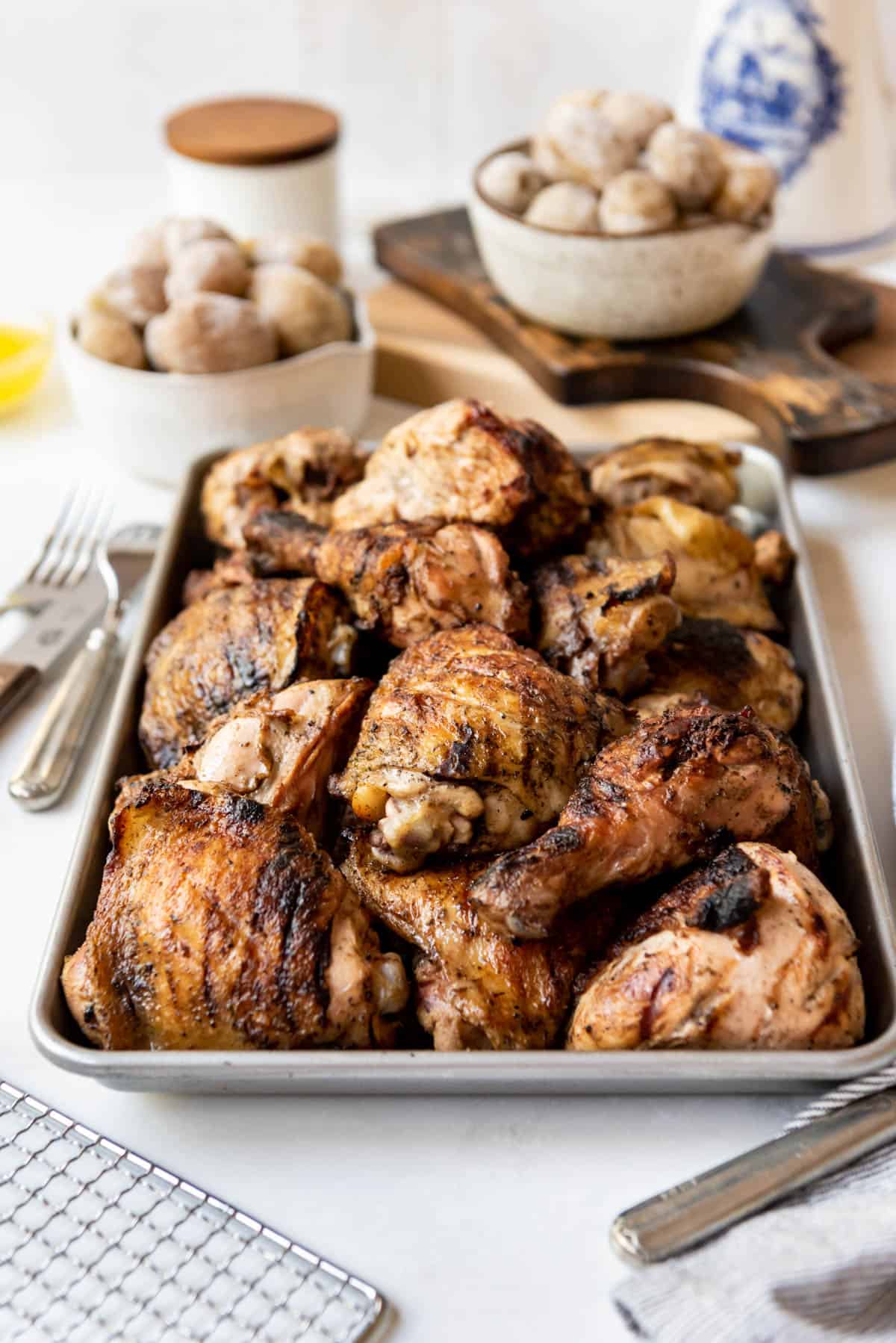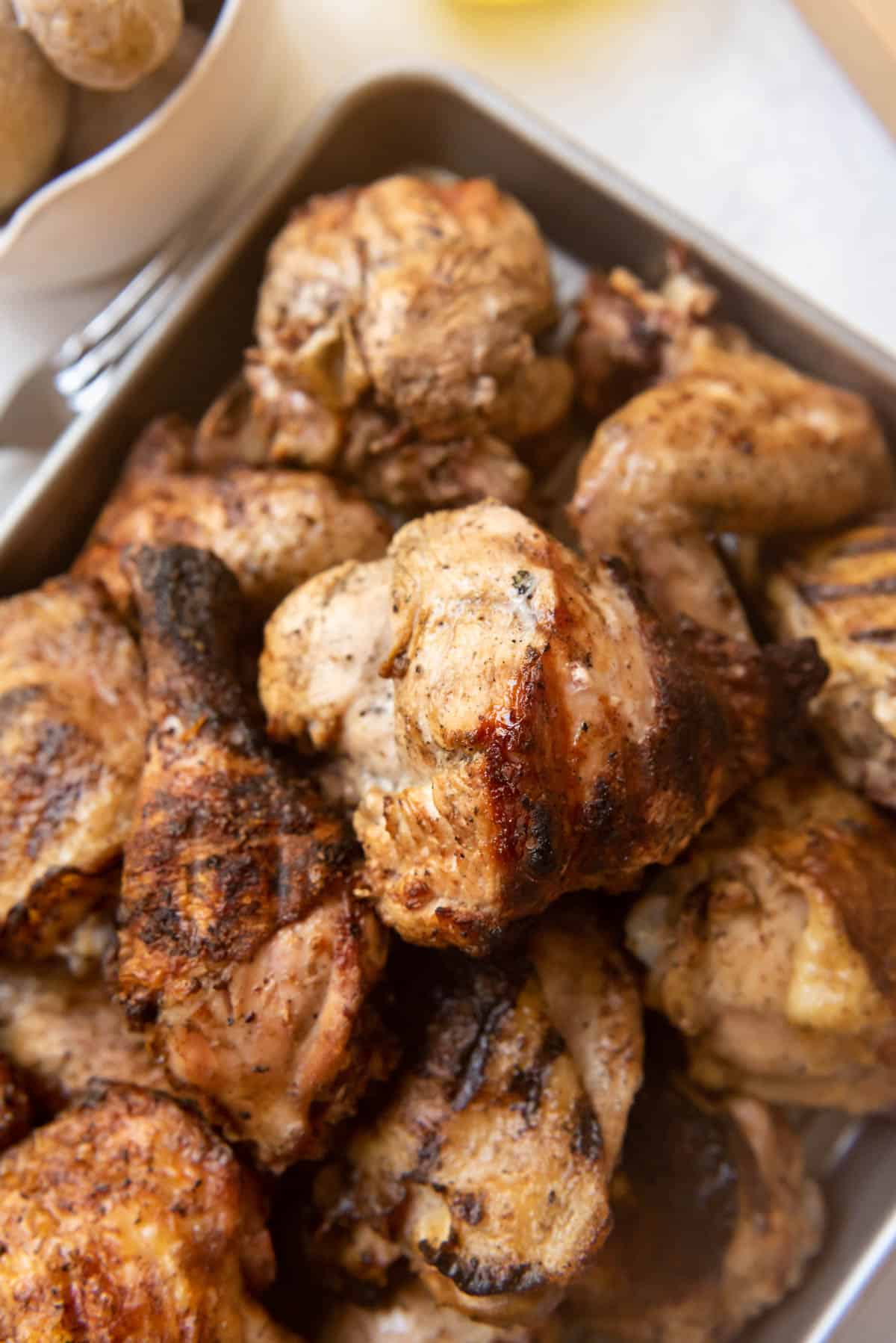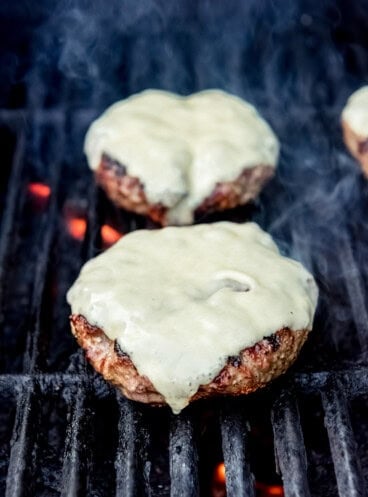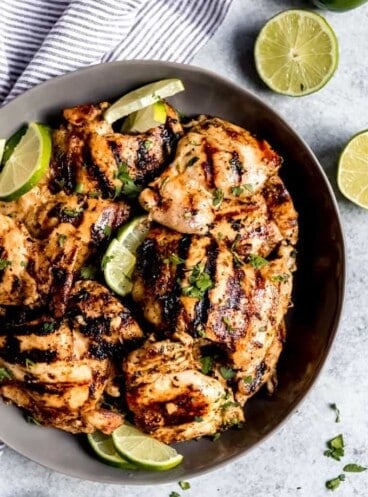Of all the recipes I have made to represent New York for my American Eats series, I think this Cornell Chicken just might be the favorite. It’s so simple to prepare and it reminds me of relaxed summer barbecues as a kid. For the uninitiated, Cornell Chicken that is perfectly cooked has a delicious skin that’s flavorful and crisp, with tender and juicy chicken on the bone underneath it. You pick your favorite piece, whether it’s the drumstick, breast, or thigh, and dig in! It’s finger-licking good and is perfect for a family dinner, summer BBQ, or a special occasion. We love cooking on our grill, even in the cold seasons, and this is just the kind of recipe we love all year round! Quick to prep and ideal for any occasion, this Cornell chicken recipe is a ticket to rave reviews at your next cookout. For more delicious grilled dishes, check out my Grilled Pork Chops with Sweet BBQ Pork Rub, Grilled Flank Steak with Mushrooms, Huli Huli Chicken, and this Grilled Rib Eye Steak!
Why is it called Cornell Chicken?
The original Cornell Chicken recipe was developed in the early 1950’s by Dr. Robert C. Baker, a food science professor at Cornell University. Dr. Baker’s innovative recipe made for delicious chicken dinners but also supported local farms by promoting the use of smaller chickens. The simple recipe quickly became a staple at the New York State Fair and fire department cookouts (hence its alternative name, Fireman’s Chicken). The dish was so popular that it even contributed to the upsurge of New York State’s poultry industry and quickly established itself as a Central New York specialty! It’s an easy recipe that has stood the test of time, proving that sometimes the simplest things in life are the most enjoyable.
Why We Love This Recipe
It’s an iconic recipe that encourages the use of local produce, promotes local farming, and strengthens local communities! This easy recipe uses simple ingredients but produces a flavorful chicken dish that somehow tastes more “chicken-y”, perfect for almost any occasion. With very little prep time, the secret to this recipe is in how it’s marinated and the delicious way the chicken is cooked over charcoal.
What You’ll Need
Scroll down to the recipe card below this post for ingredient quantities and full instructions.
Egg – Acts as an emulsifier for the marinade, ensuring that the oil and vinegar blend together seamlessly. Oil – Vegetable oil carries the flavors of the spices and helps keep the chicken moist during the grilling process. You can use another cooking oil, like olive oil or canola oil, if you prefer. Apple Cider Vinegar – The acidic component of the marinade, which tenderizes the chicken and adds a bright, tangy flavor profile. Salt – Enhances the natural flavors of the chicken and helps in the brining process. Poultry Seasoning – Aromatic herbs that infuse the chicken with classic flavors that pair wonderfully with the smoke from the grill. Pepper – Adds a mild heat and earthiness, complementing the tang of the vinegar. Use freshly ground black pepper for the best flavor. Chicken – I used a whole chicken that I cut up (here’s my tutorial on how to cut up a whole chicken yourself), but you could use only bone-in chicken thighs as they’re ideal for grilling or other kinds of chicken pieces if you prefer. Charcoal grill – The marinade and chicken are delicious on their own, but for authentic Cornell chicken, it should be grilled over hot coals, not gas.
How to Make This Recipe
Tips for Success
Prep the grill. A well-prepared grill is the foundation of great barbecue. Make sure your grill grates are clean and oiled to prevent sticking. If you’re using a charcoal grill, know how to set up a two-zone fire, which allows for both direct and indirect cooking—a critical aspect of the Cornell method. Have extra charcoal, just in case. Maintaining the right temperature on your grill is essential. You want a hot direct heat side for searing and a cooler indirect heat side for cooking through. Use a grill thermometer to keep an eye on the temperature, and have a plan for controlling it, whether that means adjusting gas flow on a gas grill or managing the coals (you might need to add more) and airflow on a charcoal grill. Don’t forget to baste! Basting the chicken keeps it moist and adds flavor. Use a brush to apply the marinade, and do it frequently, turning the chicken each time. This not only flavors the meat but also helps achieve that coveted crispy skin. Use a thermometer. The best way to know your chicken is cooked is by using an instant-read thermometer. The internal temperature should reach 165°F in the thickest part of the thigh, away from the bone. This ensures the chicken is safe to eat and prevents overcooking, which can dry out the meat. Cut breast pieces in half. The bone-in breast pieces are the hardest to cook through on a charcoal grill because they are so much larger and thicker than the other chicken pieces, but by cutting them right in half through the bone, they are the same size and much easier to grill. Plus, there is more surface area exposed to both the marinade and charcoal smoke, which means more flavor.
Substitutions and Variations
The original recipe called for 3 tablespoons salt but I’ve halved this as I felt it was a bit too much. You can change this as you wish. If you can’t find poultry seasoning, make your own blend with thyme, sage, marjoram, rosemary, black pepper, and nutmeg. White wine vinegar can be used instead of apple cider vinegar if desired, although the flavor will change slightly. Skin-on chicken is essential for this recipe to protect the meat during grilling and keep it moist. However, if you’re looking to cut down on fat, skinless pieces can be used—just watch them closely to prevent drying out. Using pieces of chicken with the bone in means they are easy to grab and turn, but it also allows the flavors from the bone to seep into the chicken while cooking. You can use boneless pieces if you wish, but the results will be a bit different, and the cooking time may be less.
More Delicious Grilled Recipes You’ll Love
Grilled Shrimp Skewers Grilled Turkey Burgers Smoked Spatchcock Chicken (Pellet Grill) Grilled Ribeye Steak
For a themed dinner, stay true to the origins of the recipe. Serve the chicken with sides that are popular in Upstate New York, like sweetcorn during the summer or a hearty squash dish in the fall. A mixed green salad with a cider vinegar-based dressing or this Homemade Caesar Salad to mirror the tanginess of the chicken’s marinade. If comfort is what you’re after, try some classic American sides like this Easy Homemade Macaroni Salad with Egg, Baked Beans, Crispy Onion Rings, or Creamy Pea Salad with Bacon. They’re rich and satisfying, balancing out the lighter, tangy profile of the Cornell Chicken. This chicken dish also goes well with a side of French Fries or my Baked Sweet Potato Fries. If you’re serving this State Fair Chicken at your event, try adding my Bacon Wrapped Hot Dogs or these Coney Island Hot Dogs to your menu.
Sriracha Mayo Marinated Grilled Lamb Chops
Burgers 101: How to Grill Burgers
Grilled Cilantro Lime Chicken Thighs
Let me know what you thought with a comment and rating below. You can also take a picture and tag me on Instagram @houseofnasheats or share it on the Pinterest pin so I can see.
